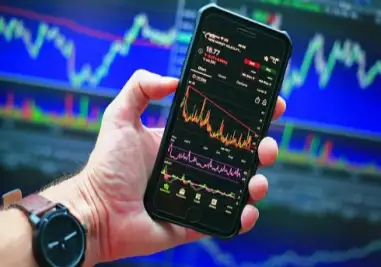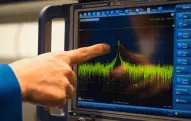E-Commerce : cheap purchases from China is over
On July 1, the biggest EU-wide VAT reform since the creation of the Single Market in 1993 comes into force. The reform affects all traders who sell products online across borders in Europe or deliver them to Europe from third countries: small Internet retailers in and outside the EU, corporations such as Amazon, international manufacturers and brands that deliver directly to end consumers in the EU - and ultimately consumers as well. For some products, prices are expected to rise. The most important things in summary:
What's the point of it all?
The reform serves to establish tax fairness within the EU and with traders outside the EU. Or as André Schwarz, deputy managing director of the German Wholesale and Foreign Trade Association (BGA), puts it: "The aim is to prevent competitive advantages from being cheated by unpaid sales taxes." In short: Smartphones from Asia should no longer be able to be declared as pacifiers. In the future, every package from a non-EU country will go through customs and must be declared digitally, says a spokesman for the General Customs Directorate in Bonn.
What exactly is new?
In the future, shipments of goods from outside the EU with a value of less than EUR 22 will no longer be exempt from import VAT. Instead, they will be taxed at the VAT rate applicable in the respective EU country. In addition, the threshold from which VAT must be paid within the EU will drop to a total of 10,000 euros across the EU. This means that many more EU traders than before will have to pay VAT in other EU states in the future. Sales below the threshold will continue to be taxed at the domestic tax office.
What does this mean for traders?
EU traders will no longer be at a tax disadvantage compared with their competitors from non-EU countries. But because of the low EU-wide threshold of 10,000 euros, "significantly more dealers than before will have to put up with a lot more bureaucracy. Smaller traders in particular are likely to be in trouble as a result," says Moritz Lukas, Vice President Sales at Taxdoo, a provider that automates the processing of international sales tax. BGA spokesman Schwarz adds: "All products must be provided with the tax rates of the destination countries, and this involves a considerable amount of manual effort." And a major source of error. "The big risk here is having to pay sales tax arrears out of your own pocket," says Schwarz. Conversely, double taxation is also conceivable.
The reform also changes things for globally active mail-order companies like Amazon: "From now on, in terms of sales tax law, it is not a merchant registered on an Internet marketplace who delivers to the consumer," says Ralph Brügelmann, Head of Tax and Finance at the German Trade Association, "but the platform itself. That means the platform owes the sales tax and also pays it." Schwarz adds, "As of July 1, 2021, platforms such as Amazon, Ebay, etc. will then be held more responsible for sales tax and therefore also have their own interest in ensuring that not only they, but also those who sell products via the platform, fulfill the tax obligations." The same applies to Chinese platforms that deliver directly to private customers in Europe.
How is this supposed to work?
Merchants can pay VAT centrally for all EU countries via a so-called One-Stop-Shop (OSS) - that is, in Germany via the Federal Central Tax Office (Bundeszentralamt für Steuern), where companies must register with their VAT identification number. This is intended to simplify tax processing. Thus, a company that is established in only one country of the EU and supplies its customers in other EU countries only has to file a tax return in its home country. It therefore does not have to register with the local tax authorities in every country to which it supplies and pay the VAT there, says Patrick Oppelt, legal assessor at the European Consumer Center Germany.Companies from outside the EU can also register for the OSS system. The advantage here is that the goods then do not have to be taxed via customs, but can be delivered directly to the end customer.The basic rule is that anyone who wants to use the OSS reporting procedure as early as the third quarter must register for it by June 30 - but according to surveys, many retailers did not even know about the reform until recently. And: OSS only applies to B2C trade, i.e. shipping from the company to the end consumer.
What is IOSS?
IOSS (Import-One-Stop-Shop) is the acronymfor the new regulation for goods shipments from third countries such as China, the USA and the UK. "In most cases," says HDE expert Brügelmann, "the platform or interface now owes the tax and also pays it." IOSS is supposed to be the lever against tax fraud. Here, registered online retailers can pay the import VAT directly to the tax authorities in the EU for goods up to a value of 150 euros. For shipments with a value of 150 euros and more, the previous standard procedure applies, which is taken care of by the parcel delivery service. In addition to the import VAT, customs duty may also be due, depending on the goods.
Does this help against fraud?
"When using the IOSS, abuse is not completely ruled out," says HDE expert Brügelmann. Customs only checks the validity of the IOSS number and not whether the IOSS number also belongs to the company using it. A trader from a third country could therefore quote an IOSS number that is not assigned to him and would then be exempt from import VAT. Subsequent remission or refund requests for returns, post-collection or appeal procedures are also a challenge in the IOSS, according to the Foreign Trade Association.
And the prices?
Articles from China, for example, such as cell phone covers, which previously cost ten euros, could become up to 80 percent more expensive, calculates the tax processing company eClear, whose supervisory board chairman is former Finance Minister Peer Steinbrück. The reason is that the 22-euro threshold will fall and instead 19 (or reduced seven) percent import VAT and about six euros in postal charges will be due. "Parcels with a goods value of more than 22 euros could also become more expensive, because until now, incorrect goods value information was often given when importing," says Moritz Lukas of Taxdoo. "Now, sales tax always applies from the first cent for imports."
In addition, consumers shopping on online platforms must be prepared to be shown different prices when completing the order, says Schwarz, than was done initially in the store. "That's because it's only when the delivery address is entered that it's determined which national regulation comes into play, which tax rate is to be applied." According to HDE, this could lead to surprises, as many consumers do not even know that they are ordering from outside the EU.
More expensive items of more than 150 euros may also incur additional costs. In addition to the regular import sales tax of 19 percent, customs costs for textiles from the Far East, for example, amount to twelve to 13 percent of the value of the goods.Customs also says consumers in Germany should note that, as in the past, the postal, courier or express service provider they use usually handles customs clearance and pays in advance for the import duties due. "The consignee then pays back the import duties paid to the delivery company upon delivery," he said. Online purchasers should keep in mind that carriers generally charge a flat service fee for handling customs formalities." Previously cheap purchases via Wish, Alibaba and Amazon from China could thus come to an end.According to customs, nothing will change for gift shipments from private individuals to private individuals. Here, the value limit of 45 euros continues to apply. The value limit of 150 euros for goods-related customs duties also remains unchanged.
What is missing?
"One omission is clearly the lack of an EU-wide database based on customs tariff numbers and the display of the national tax rate allocation," says Schwarz of the BGA. The company eClear complains that the EU data is flawed and incomplete. In total, the number of VAT exemptions in all EU states is said to be 60,000. In addition, critics criticize the lack of a mechanism to reflect the dynamics in cross-border e-commerce. The EU VAT package was initiated a good ten years ago, and today the warehouse is often located in a different country than the delivery address. This development, for example, is not reflected in the reform.










































